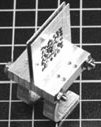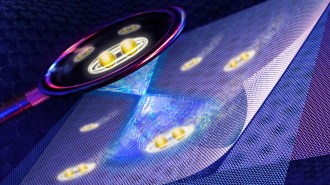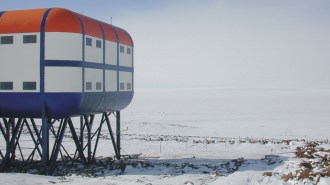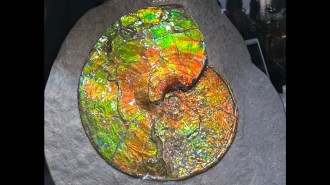Physicists hotly debate why certain copper oxide crystals can conduct electricity without resistance, or superconduct, at temperatures far higher than conventional superconductors can.

Now, a German-French-Russian team led by Bernhard Keimer of the Max Planck Institute for Solid State Research in Stuttgart, Germany, reports crucial evidence that a magnetic feature of the copper oxide plays a role.
Many atoms have a magnetic property called spin, which makes them behave as tiny bar magnets.
Scientists noticed in experiments even 10 years ago that at a temperature just below the superconductivity threshold, the spins of many atoms in some copper oxide compounds fluctuated in a coordinated manner.
Many scientists dismissed those magnetic behaviors as irrelevant to the so-called high-temperature superconductors’ loss of resistance. That’s because the traits hadn’t shown up in the first of those compounds, a lanthanum-containing material discovered in 1986 (SN: 11/18/00, p. 330: http://www.sciencenews.org/20001118/bob1.asp). That material harbored only single layers of copper oxide, whereas the newer materials that show the spin phenomenon have double layers.
The lanthanum material was the only single-oxide-layer superconductor that could be grown large enough to test for the spin phenomenon. To get around that obstacle, Keimer and his colleagues spent months painstakingly hand-aligning small crystals of thallium barium copper oxide–a single-oxide-layer compound–and gluing them onto aluminum plates. The result was a system that models a single-oxide-layer crystal big enough for magnetic analysis using a neutron beam. The team describes its work in the Feb. 8 Science.
Just below the thallium compound’s threshold superconducting temperature of 90 kelvins, the scientists detected the telltale sign of the fluctuating magnetic pattern. Now “it’s pretty much been proven that the [spin coordination] is present for all high-temperature superconductors,” comments Andrey V. Chubukov of the University of Wisconsin-Madison.





